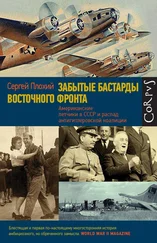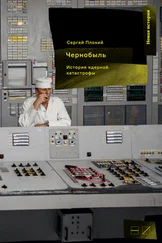When asked to prepare a timetable for the tests, Borets readily agreed. He knew the plant exceptionally well. Unit 4 was the newest and, as many in Prypiat believed, the safest unit in the entire plant. It was part of the second stage of construction: it was housed not in a separate structure, like Units 1 and 2, but in a “duplex” that it shared with Unit 3. Both units had a production capacity of up to 1,000 megawatts of electrical energy (MWe). In order to reach that capacity, they had to generate at least 3,000 megawatts of thermal energy (MWt). Their generating capacity was rated as 3,200 MWt. Unit 3 had become operational in December 1981, and Unit 4 in December 1983. The protocol of the commission that inspected and launched Unit 4 had been signed by Nikolai Fomin on December 18, 1983.
The protocol described the reactor’s main characteristics. Its vessel was a steel cylinder over 10 meters in diameter and 7 meters high made of high-purity graphite placed in a concrete pit almost 22 meters long, 22 meters wide, and 26 meters high. It was filled with graphite blocks to slow down the fast-moving neutrons and help them sustain a nuclear chain reaction by splitting the atoms of uranium into two smaller atoms and releasing kinetic energy. At the top and bottom of the cylinder were two massive metal plates that served as biological shields. The top one, called “System E” and dubbed “Elena” by the operators, was penetrated by numerous standpipes used for two kinds of channel assemblies—control and fuel rods. The reactor had 1,661 fuel rods or pressure channels, each approximately 3.5 meters long, filled with pellets of 2 to 3 percent enriched uranium-235 and natural uranium-238. There were 211 movable control rods made of boron carbide that absorbed neutrons, and which could therefore slow down the fission reaction if they were inserted into the active zone (or core) of the reactor, or increase the speed of the reaction if they were removed from the active zone. Two coolant loops circulated water overheated by the energy produced by the chain-reaction fuel rods, conducting it to steam drums that separated the steam from the water and fed it into the turbine to produce electrical power.
As with all Soviet reactors, there was no secure containment of the Unit 4 reactor except its concrete pit, but the commission found the functioning of all systems of the reactor satisfactory. As always, there were caveats. The commission noted problems with the reactor that would have to be fixed in the future. They recommended, among other things, that the construction of the control rods be modified. It turned out that they could produce an effect of positive reactivity, or a spike in the fission reaction and increase of the reactor’s power, when inserted into the graphite core at a depth of less than 2 meters. (The overall length of the rods was 6 meters.) The adjustments that the commission recommended had already been made to Unit 3. These improvements were supposed to take care of problems such as those experienced in 1975 at the Leningrad power plant, where a drastic rise of radioactivity and destabilization of the reactor had resulted from a positive void effect—an increase of radioactivity within the reactor caused by the loss of coolant. The details of that accident, which almost destroyed the reactor, had been withheld from the personnel of other nuclear plants, but Borets knew firsthand how dangerous the situation had become at the Leningrad location. 11
On November 30, 1975, Borets, who had been sent to the Leningrad plant from Chernobyl to undergo training on an RBMK reactor, inadvertently became a witness of the worst accident in the reactor’s history. That day he decided to stay at the plant after his shift to see how the reactor would behave during the process of “shifting gears”—stopping the reactor and moving from one mode of operation to another. It soon became clear to Borets that there was something wrong with the reactor. Running at a low power level, it began to increase the radiation rate, even though the operator tried to slow down the process by inserting additional control rods into the active zone of the reactor. Normally, the nuclear radiation rate decreased as operators added control rods to the active zone of the reactor, where the nuclear reaction took place and nuclear energy was released from the fuel channels. But the RBMK reactor at the Leningrad power station behaved differently. Even when the experienced operator, whose skills impressed Borets, inserted additional rods manually, it did not slow down the rapidly increasing rate of radiation. The reactor was not behaving as expected.
As far as Borets was concerned, the reactor was out of control. Having operated reactors previously, he knew that if the rapidly rising level of radiation was not checked, it could cause an explosion. “Imagine yourself behind the steering wheel of a car,” said Borets the following day to a security official who had little understanding of nuclear physics. “You start the motor. You start moving. You accelerate smoothly. You shift gears. Your speed is 60 kmph. You take your foot off the gas pedal. And suddenly the car independently begins to increase speed to 80, 100, 130, 150 kmph. You brake to no effect; the speed keeps increasing. How would you feel?” 12
The ungovernable reactor was stopped twice by means of SCRAM, the emergency system, which halted the reaction. An explosion was averted, but because of spikes in the strength of the reaction, one of the fuel channels inside the reactor core melted, releasing uranium into the core. The reactor was shut down. It was “cleaned” the following day with nitrogen, and the waste, amounting to 1.5 million curies of radionuclides, was released into the environment through the exhaust pipe. One curie is equivalent to the amount of radiation released by the fission of 37 billion atoms. It can contaminate 10 billion quarts of milk, making them unfit for human consumption. According to the International Atomic Energy Agency, a safe level of nuclear contamination of a territory is 5 curies per square kilometer. It is anyone’s guess what impact 1.5 million curies had on the people and the territory around the station, including the city of Leningrad, less than 50 kilometers away. 13
Vitalii Borets never received any explanation of what had gone wrong with the reactor, and he knew nothing about this major technical weakness in the reactor design. The information was kept under wraps. The designers of the reactor made no major changes in the RBMK model; instead, they issued instructions on how the control rods should be improved, failing to explain why that had to be done. Those instructions eventually made their way into the recommendations of the commission that inspected reactor No. 4 at the Chernobyl nuclear plant. But everyone there believed that the problem with the rods was a minor one. The lessons of the Leningrad reactor’s failure were not learned. There were many improvements that could be made to a reactor, but the main task of the plant’s operators was to produce energy, not to design new reactors or improve existing ones. The repairs could wait.
The KGB, constantly keeping a watchful eye on the plant, was generally satisfied with the condition of the two newest units. Its agents keeping track of the progress at Chernobyl believed that Units 3 and 4 were generally safer than Units 1 and 2. By 1984, they had concluded that despite serious safety issues at the plant, the general situation was improving: in 1982, there had been three accidents and sixteen breakdowns of equipment at the three working units, but in the first nine months of 1984, there had been no accidents and only ten breakdowns. 14
There seemed to be no reason for Vitalii Borets or anyone else to recall the accident at the Leningrad station when they were getting ready for the shutdown of reactor No. 4 for testing. Borets did as he was asked. He collected information on all the proposed tests from the various units and consultants and submitted the timetables he prepared to the expert group responsible for planning the shutdown. Borets suggested that the shutdown begin on Thursday, April 24, at 10:00 p.m. The whole operation, including the shutdown test, was to end by 1:00 p.m. on Friday afternoon, April 25.
Читать дальше
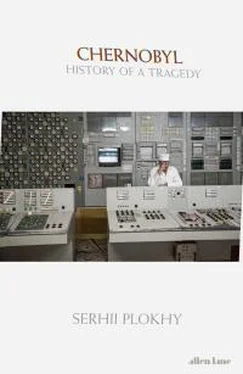

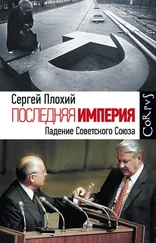



![Сергей Плохий - Чернобыль - История ядерной катастрофы [litres]](/books/385171/sergej-plohij-chernobyl-istoriya-yadernoj-katastrof-thumb.webp)
![Сергей Плохий - Человек, стрелявший ядом [История одного шпиона времен холодной войны]](/books/405163/sergej-plohij-chelovek-strelyavshij-yadom-istoriya-od-thumb.webp)

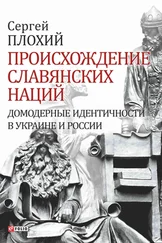
![Сергей Плохий - Потерянное царство. Поход за имперским идеалом и сотворение русской нации [c 1470 года до наших дней]](/books/433093/sergej-plohij-poteryannoe-carstvo-pohod-za-impersk-thumb.webp)
